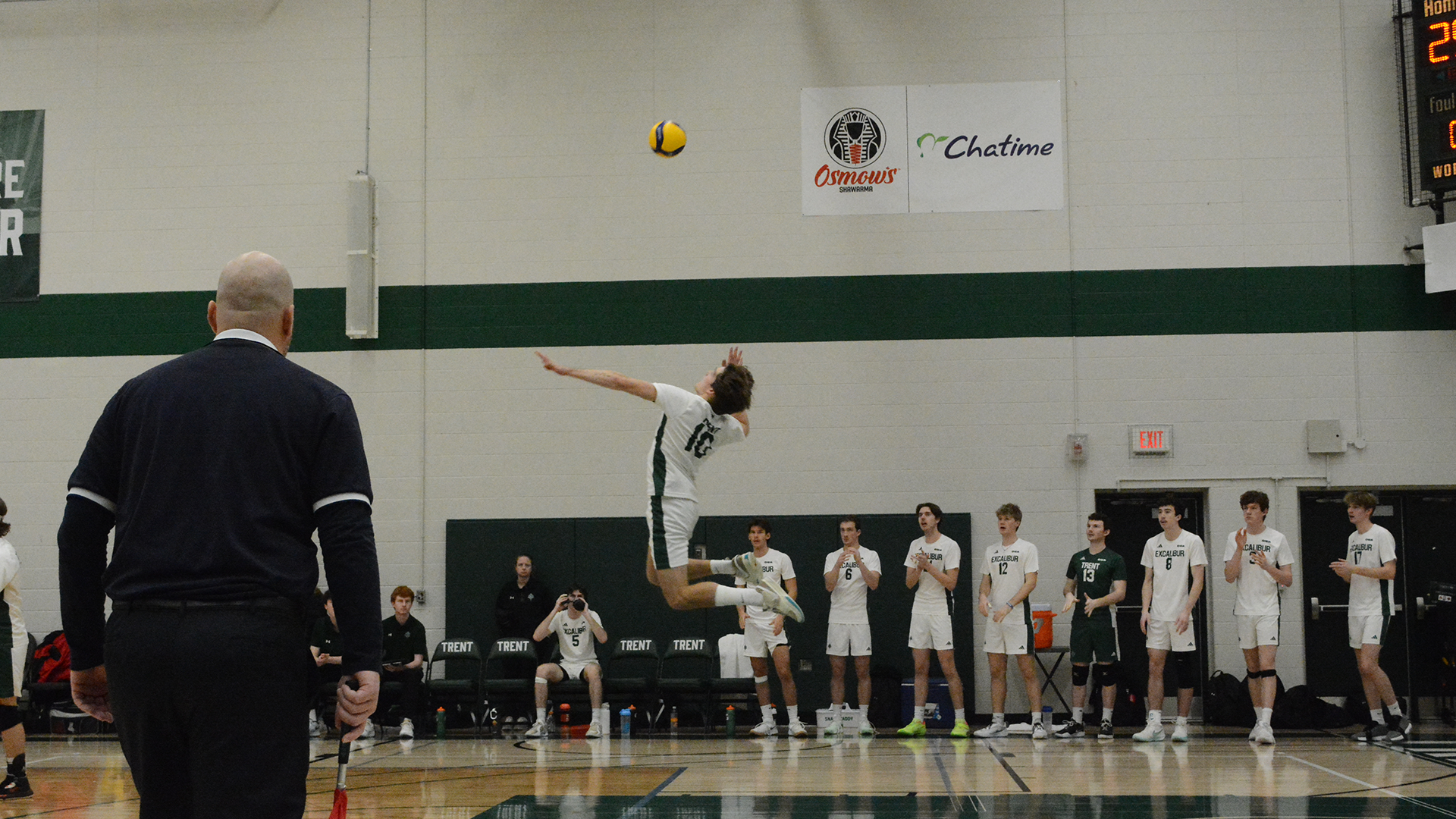Beginnings
I started at Trent Radio in 2002. I was in second year in the Great Hall at Champlain. My friend Ryder Ziola said,
“Hey James! Do you want to do a radio show?!”
And I was like, “Oh, God… Grrrnerrr.”
Because I was nervous. Because I’m pretty shy.
And he said, “No! It’s going to be great, we’ll do a show about Star Trek.”
And I thought, well, I like Star Trek.
When we went Barb Woolner, Program Director at the time, she was very warm and welcoming. She’s working at Trent Walkhome now.
Because, you see, these people tend to stick around on campus one way or another, and do the things they love. She got us on the air, and I felt horribly unprepared, sweating with fear, I think I wanted to throw up all over the microphone. Then, when I was done, I had that kind of relief-sweat, and I was like… Ah, I did something really cool I didn’t know I was capable of [laughs].
Making mistakes at Trent Radio
I’ve always tried to be very gentle and kind with programmers. It’s because I made every mistake, I made every failure. John Muir used to call me his canary in the coal mine, because I would come upstairs and say,
“John, I, uh… broke the CD player, and I’m really, really sorry… I don’t know why it’s not working.”
Oh, I broke everything. I destroyed the Studio B computer one time, because I was trying to do a radio drama that was much too big for the hard drive. I thought ooh, radio drama, that’s cool! Threw myself into it. And like many people in university, I was escaping a terrible relationship so I devoted myself to a project and the project that I had was radio.
So I melted the computer, and John demanded, “Well, what were you doing!?”
And I said, “It was a four-hour radio drama that I was trying to make.”
I guess he thought, what is this person doing making four hour radio dramas and melting the computer?
Becoming Program Director
So, very quickly I looked for other ways to get involved. I became an operator, and I got onto the Board and Ryder Ziola, who was President of the Board, he ended up leaving part-way through the year so I ended becoming President.
I don’t know how this happened, Zara, I don’t know how any of this happened. I was very nervous and I felt like a big fake the whole time, like someone was going to turn around the corner and go “boo!”
Partly why I wrote that last article for Arthur that way, it was my suspicion that it might be my last one.
Because I remember what it’s like to be young, and uncertain, and maybe a little insecure and not able to find your footing.
I was able to hang out with really weird people who were very different from me. Sweaty and nervous and creative and interesting too. And then, you know, we were all sweaty and nervous in this big pile and we got less sweaty and less nervous because we got to be creative together.
So I fell in love with Trent Radio, and when it came time for me to graduate I said to John in probably one of the boldest statements I’ve ever made in my life:
“I’m coming back later, and I’m coming for your job.”
And he said, “Really? People usually like the Program Director’s job better and it’s a lot more fun.”
So then I said, “Okay, then I’m coming for that one!”
Trent University and Peterborough’s downtown
For most of the time Laurel Paluck was Program Director and she went on to work for Peterborough NewDance, ArtsWeek, amongst other things. It’s interesting how the really cool people at Trent Radio tend to stay in Peterborough and stay in the arts and keep doing really different things.
I think Trent Radio affects people in a kind of brainwashy way that they feel the need to help the community and to help foster new generations of Peterborough. Part of the reason why I wanted to do this class with Liam Mitchell is that even though I’m in publishing now, I really want to do this component. I think it’s really important to get people the skills, and to help people develop them, and for people to fail, because if you don’t give people opportunities, there’s no future. There’s actually no future.
Trent Radio changing your life
I want people to do really cool things. To write stories, to do radio shows, to explore their creativity. Learn how to be serious about your creativity and get a product out of it, because lots of people can be creative and never leave their apartments and never get anything done. And what Trent Radio does, and what I still try to do is to take that creativity and take that energy and get something done with it and that’s actually what people will be able to share.
It is student organizations like Arthur Newspaper, like Trent Radio, that actually connect students with the community. Trent University is a bubble; university is a bubble of learning, but it is the extra curricular activities that define you, and that’s the way you actually connect to Peterborough.
You will not find one cool person in the arts scene in Peterborough who does not have a history with Trent Radio or Arthur. And they’re all over the place, and they’re all over the world. I can’t tell you how many people from Trent Radio have gone on to not only be at other radio stations but on to the CBC.
It is one thing that John tries to downplay quite wisely is that TR will not lead you to a job. And it won’t, Trent Radio will never lead you to a job. Trent Radio will be able to lead you to be the kind of person who gets the job. Arthur Newspaper does the same thing.
That’s the great thing about institutions like Trent Radio and Arthur. They make you try things, and they make you afraid and on the cusp of failure at all times and that makes you develop.
Trent Radio’s philosophy has been embedded in me for life. I’m really big on investing in failure.
Trent Radio vs. Commercial Radio
The music industry is very slow to discover new things and exciting things and very slow to discover change. The kind of music that would be charting is just to get record weasels better numbers to return to their record executives.
But on Trent Radio, we had sixteen year-old girls playing Lorde six months before she was ever heard on commercial radio.
And if we were doing something like charting at Trent Radio, we would be an arm of the music industry, and that never would have happened.
The internet is moving faster than the music industry. As long as you put it in the hands of someone doing it, you get all these new and interesting things.
So rarely do you get to be a part of an institution that does good, and Trent Radio, creatively and culturally, does good in the community. If I’m going to be happy about anything I’ve done in Trent Radio, it’s that.
Trent Radio doesn’t have an identity; it teaches you to embrace your identity.
Advice for first timers
Everyone’s going to be afraid. Everyone’s in the same boat as you are. It’s not only okay if you don’t know what you’re doing; it’s okay if you don’t know what you want.
I encourage people to get involved in Trent Radio who have no real interest in radio, who just are interested in the topic they’re interested in.
Like Star Trek.
Like Star Trek, it’s a great way to focus your interests.


.png)


.jpg)


.jpeg)



.jpg)

.jpg)


.jpg)


.jpg)


.png)